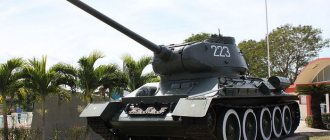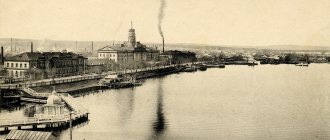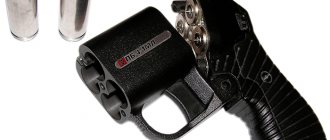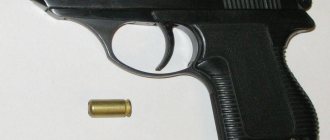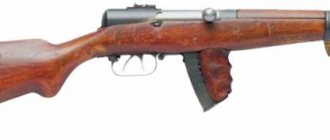BMD-4M airborne combat vehicle with additional armor protection installed. The airborne troops have always been the elite - first in the Soviet and then in the Russian army. They differ from conventional ground units not only in their increased level of combat training, but also in their special equipment, part of which, starting in the 60s of the last century, were airborne combat vehicles. The most modern example of this light armored vehicle is the BMD 4M. Their serial production has been ongoing since 2015, however, the “biography” of the new combat vehicles began much earlier and was quite difficult.
History of the development of the BMD-4M airborne combat vehicle
In the 80s of the last century, a change in generations of light armored vehicles occurred in the Soviet army: motorized rifle troops received the BMP-2, and airborne troops received the BMD-2. These vehicles differed from each other in layout and overall weight, but were unified in armament, the main element of which was the 2A42 automatic thirty-millimeter cannon.
Apparently, both military customers and armored vehicle designers planned to continue to ensure “firing parity” between conventional infantry and paratroopers. Meanwhile, back in 1977, work began on the creation of the BMP-3, the armament of which was radically strengthened by the new 2A70 gun with a caliber of 100 mm. An attempt to install the same gun on a BMD threatened to unacceptably increase its mass.
Despite these concerns, already during the design of the future BMD-3, the possibility of using the same types of weapons on it as on the BMP-3 was studied. Calculations have shown that the weight of such a machine will exceed 18 tons. This meant that the main military transport aircraft Il-76 could only carry two infantry fighting vehicles, which did not suit the command of the airborne forces.
BMD-3 - the vehicle on the basis of which the first modification of the BMD-4 was made
As a result, the BMD-3 remained with the same 2A42 cannon as the BMD-2, differing from the latter in its weapon control system and slightly reinforced armor. As a “half measure” to increase the level of armament, the new vehicle was equipped with an automatic grenade launcher. In 1990, the BMD 3 was put into service, however, the entire volume of its subsequent serial production amounted to only 137 units.
As a result, by the beginning of the twenty-first century, the Russian Airborne Forces arrived with the obsolete BMD-1 and BMD-2. Both of these vehicles could no longer provide full fire support on the battlefield. Anticipating such a situation, the designers of the Volgograd Tractor Plant back in 1997 decided to return to the old idea and try to modernize the BMD-3 by installing a Bakhcha-U fighting compartment on it, as on the BMP 3.
On the last day of 2004, the updated airborne combat vehicle was named BMD-4. Within a few months, the first samples entered the airborne troops. It should be noted that even during the development period, the designers managed to get customers to somewhat relax the requirements for the weight of the machine. At first, the military wanted the mass of the BMD-4 to be the same as that of the BMD-3, but after long and painful negotiations, the parties agreed on a limit of 13,200 kilograms. Other technical characteristics obtained on the BMD 4 were quite satisfactory to customers.
In reality, the weight was 13.6 tons, which immediately caused a lot of complaints, although it was already clear that it was physically impossible to install a hundred-millimeter cannon with ammunition and not make the vehicle heavier.
Landing armored vehicles from the Il-76 - it was to ensure this possibility that the designers were required to reduce the weight of the BMD.
In an effort to reduce the weight, the designers removed the automatic grenade launcher from the BMD and slightly reduced the ammunition load of the thirty-millimeter cannon, but it was not possible to achieve full “compensation”.
Despite a number of positive reviews, the Ministry of Defense was in no hurry to place orders for the BMD-4. The reasons for this were revealed a little later, but this did not help the Volgograd Tractor Plant - in 2005 the enterprise went bankrupt and was actually abolished. Since the airborne troops still needed to update their fleet of armored vehicles, the BMD-4 project was transferred to Kurganmashzavod, the manufacturer of the BMP-3.
Already in 2008, a converted version of the airborne combat vehicle was demonstrated, designated BMD-4M. The designers of Kurganmashzavod significantly changed the geometry of the armored hull, bringing it closer to the BMP-3, and installed a more powerful engine, which made it possible to slightly increase speed and maneuverability. At the same time, the set of weapons remained the same. It seemed that the project had finally moved forward, however, it was then that the contradictions that had remained “under the rug” among the military leadership surfaced.
In April 2010, V.A. Popovkin, Russia's first deputy defense minister, said on behalf of that department that no purchases of BMD-4M are planned. The new car immediately began to be fiercely criticized - this time quite publicly. Particular indignation was expressed regarding the low level of crew protection and the high purchase price (about 10% more than the T-90A tank). It came to statements about the need to acquire foreign military equipment for the Airborne Forces.
BMD-4 infantry fighting vehicle on the streets of Moscow in 2008
In 2012, the BMD-4M once again “buried” N.E. Makarov, Chief of the General Staff of the Russian Armed Forces, who incidentally also cursed the BMP-3. Meanwhile, the new car also had supporters. At the same time, it was not difficult to notice that the BMD-4M was opposed by generals from the “regular” ground forces, while their opponents were representatives of the Airborne Forces. The most authoritative “defender” of the new car was V.A. Shamanov.
It should be taken into account that from 2007 to 2012 the Ministry of Defense was headed by A.E. Serdyukov, who treated the airborne troops with open hostility, since they clearly “did not fit in” with the reform he was carrying out. For some time there was even a question about the complete abolition of the Airborne Forces. Of course, the paratroopers could not come to terms with such an attitude, which led to a long and meaningless “war”, one of the victims of which could well have been the BMD-4M.
Only in 2016 was it decided to adopt a new airborne combat vehicle. The volume of serial production of BMD-4M amounted to over 180 units, production continues. Moreover, it is planned to manufacture new types of amphibious armored vehicles on the chassis of this vehicle. It is difficult to say whether these plans will come true, because the financial situation of Kurganmashzavod is quite difficult - for many years now the enterprise has literally been balancing on the very edge of the abyss, and now there is simply no other manufacturer in Russia.
"" strategic purpose
The pavilion of the Tactical Missile Weapons Corporation displays the missiles and bombs with which our Aerospace Forces “beat” terrorists of all stripes into fine dust in Syria.
© Vladimir Korobitsyn/zvezdaweekly.ru
Bomb KAB-500Kr.
“The KAB-500Kr works on the principle of “dropped and forgotten,” Pyotr Nikolaenko told the weekly Zvezda. – This adjustable aerial bomb with a television-correlation homing head and a concrete-piercing warhead is capable of “remembering” the location of the target and independently adjusting its flight before striking the enemy. The inevitable weapon, the superbomb. The Americans make expensive cruise missiles with such equipment, while we make inexpensive but high-precision aerial bombs. Of course, we are ahead.
Petr Nikolaenko is a specialist at a defense enterprise with the completely “peaceful” name of the State Research and Production Enterprise “Region”. Stopping at another stand at the forum, the photojournalist and I, without saying a word, unanimously remembered an old joke.
“TASS is authorized to declare that yesterday four enemy divisions crossed the border and attacked a peacefully plowing Soviet tractor. The tractor repelled the treacherous attack with heavy rocket and artillery fire, destroying 30 tanks and up to 10,000 enemy soldiers. After which, turning on the propulsion engines, the agricultural machinery disappeared into near-Earth space. Tractor driver Major Petrov was presented with the order. The chairman of the collective farm, Colonel General Sidorov, warns: if the incident repeats, then Soviet seeders, winnowing machines and a vertical take-off combine will enter the field.”
Well, what else could we remember when, under the sign of JSC "" we saw a huge active-reactive mine for the 240-mm self-propelled mortar of the reserve artillery of the Supreme High Command "Tulip" and a couple of dozen more ammunition?!
© Vladimir Korobitsyn/zvezdaweekly.ru
Products of JSC ".
“In June 1943, the first wagons with shells for 100-mm field guns left our plant for the front,” says the first deputy. General Director of the Kirov enterprise Alexander Maksen. – Since then, all domestic shells of calibers from 76 to 152 mm have been produced by us. Our technologies have been developed to such an extent that we are ready at any moment to switch to mass production of any modern ammunition.
Goals and objectives
The BMD-4M airborne combat vehicle was created to solve the following main tasks:
- Transportation of airborne troops in the near and operational rear;
- Destruction of firing points, armored vehicles, fortifications and manpower of the enemy;
- Ensuring the protection of airborne troops on the battlefield from small arms fire and fragments of the most common types of shells and mines.
BMD-4M during a march during an exercise
The main quality that distinguishes the BMD from a conventional infantry fighting vehicle is that it can be dropped both by parachute and by landing, together with its crew.
The main thing is that the suit fits...
“It doesn’t sink in water, it doesn’t burn in fire,” leading specialist of Perm-based JSC “Kirasa” Sergei Korelin suggests trying the special fabric of the 6B49 combat protective kit by touch.
Fabric is like fabric. Dense.
“It cannot be pierced by a fragment flying at a speed of 240 meters per second,” says Korelin. – Special inserts on the joints, for example, knee pads, withstand the impact of the striking element, which flies at a speed of 540 meters per second. This is the first class of protection!
© Vladimir Korobitsyn/zvezdaweekly.ru
Leading specialist of the Perm JSC "Kirasa" Sergey Korelin presents personal armor protection and combat equipment.
Individual armor protection and combat equipment developed and produced by the Perm Cuirass saved many soldiers’ lives during combat operations in the North Caucasus. Now JSC "Kirasa" is a supplier of TsNIITochmash, the main enterprise for the creation of combat equipment for the Russian soldier "Ratnik". In addition to the protective suit, Perm supplies protective gloves, thigh shields, a ventilating T-shirt and a “tricky” heat-insulating mat for the kit.
“You can sleep on it on the ground, in the snow,” said Sergei Korelin. – And when crossing a water obstacle, it is easily transformed into an element of positive buoyancy.
Next to the “Ratnikov” equipment already supplied to the troops, the proactively developed combat protection “Permyachka-MM” is presented. According to Korelin, this is “simply space” in the field of individual protection for a fighter on the battlefield.
© Vladimir Korobitsyn/zvezdaweekly.ru
Address by Russian President Vladimir Putin to the participants and guests of the Army-2018 International Military Forum.
Quote
“By tradition, this large-scale review of the latest developments in the defense industry brings together leading Russian and foreign experts, serves as a sought-after platform for discussing issues of military-technical cooperation and, of course, helps strengthen partnership contacts between defense departments of different countries...
I am convinced that the extensive program of the forum will once again convincingly demonstrate the enormous potential of our gunsmiths: designers, engineers, workers. It is their hands and talent that create unique equipment for the Russian army and navy.”
Russian President Vladimir Putin, from an address to participants and guests of the IMF “Army-2018”, August 21, 2018.
Description of design
In terms of its internal structure, the BMD-4M is in many ways similar to earlier tracked vehicles for the airborne forces, primarily the BMD-3, however, Kurganmashzavod engineers made a number of changes to the design aimed at achieving the maximum level of unification with the BMP-3. This approach greatly simplifies serial production, repair and maintenance.
Hull and turret
The layout of the BMD-4M is the same as that of other Soviet/Russian airborne combat vehicles. At the front of the case there is a control compartment. It provides space for two paratroopers and a driver (in the center). The middle part of the vehicle is the fighting compartment. Directly above it is a rotating tower. Here, along with the main weapons systems, the commander and gunner are located.
Next comes the troop compartment, where there is space for three more people, and in the rear of the vehicle there is an MTO - engine and transmission compartment.
The turret, unlike the aluminum body, is made of steel armor. It is part of a single combat module “Bakhcha-U”, which is also installed on other types of Russian light armored vehicles. The tower can be rotated 360 degrees in a horizontal plane.
BMD-4, front and top view. Three front hatches are clearly visible (two landing hatches at the edges and a driver hatch in the center)
Fire control system (FCS)
A set of equipment designed to conduct accurate fire at various targets includes the following main elements:
- Commander's sight. With the help of this device, the commander can independently shoot at various targets from cannons and a machine gun, or give target designation to the gunner. Rangefinder, day and night channels are used;
- Gunner's sight. Unlike the commander, this BMD-4M crew member can use anti-tank guided missiles, for which there is a separate information channel in his sight. If necessary, you can use twelve times optical zoom. In addition, there is a thermal imager coupled to the sight;
- Weapon stabilizer. Alignment is performed in two planes;
- A device for automatic target tracking, integrated with sights;
- Ballistic computer.
In addition, the commander and gunner have monitors and control panels. All these devices work in close interaction, which is achieved through the use of a single information system, supplemented by sensors to obtain external data about the environment.
The characteristics of the on-board fire control system ensure accurate destruction of targets both from a standstill and during movement, including afloat. It is also possible to fire high-explosive fragmentation shells from closed positions.
Powerplant and transmission
UTD-29 engine installed on BMD-4M and BMP-3
The BMD-4M is equipped with a liquid-cooled UTD-29 multi-fuel diesel engine, the same as on the BMP-3. This ten-cylinder engine reaches its maximum power of 500 horsepower at a main shaft speed of 2600 rpm. The highest torque is 1460 Nm. The engine has a dead weight of 910 kilograms. It is capable of operating in high altitude conditions, maintaining all its performance characteristics even at an altitude of 4500 meters.
The transmission of the airborne combat vehicle is also unified with the BMP-3 and is assembled in the same block with the engine. The gearbox is automatic, four-speed, with a hydrodynamic transformer. When driving in reverse, the car can reach a speed of 20 km/h.
Chassis
Representatives of Kurganmashzavod have repeatedly stated that they managed to achieve unification of the BMD-4M with the BMP-3 and the chassis, but if this happened, the changes apparently affected mainly the design details hidden from view. Externally, the previous five road wheels on each side of the vehicle are clearly visible on the BMD 4M. Nothing new is noticed in the design of the tracks.
The BMD-4M airborne combat vehicle is equipped with a hydropneumatic suspension that allows you to change the ground clearance from 190 to 590 mm by raising and lowering the body.
Armament
Combat module "Bakhcha-U" with shells for a 100-mm gun in the autoloader carousel.
The Bakhcha-U universal combat module installed on the BMD-4M includes the following types of weapons:
- 2A70 gun with automatic loader. Caliber – 100 mm, sighting range – up to 7 km, shot weight – from 15.8 to 18.2 kg, rate of fire – up to 10 rounds per minute;
- Automatic gun 2A72. Caliber – 30 mm, sighting range – up to 4 km (in terms of manpower). Feeding – selective, high-explosive fragmentation or armor-piercing cartridges 30x165 mm;
- PKTM machine gun. Caliber – 7.62 mm, sighting range – up to 1.5 km;
- Anti-tank guided missiles "Arkan" 9M117M3. Launched through the barrel of the main gun. Sighting range – up to 5.5 km, armor penetration – 750 mm (average). The warhead is tandem.
The main gun's ammunition includes 34 rounds, of which 4 are Arkan ATGMs, and 30 regular rounds are placed in the "carousel" of the automatic loader.
The ammunition load of the 2A72 gun consists of 350 shells. If landing is necessary, their number should be reduced to 254 to reduce weight. Compared to the 2A42 gun, which was installed on the BMD-2, the new gun has much lower recoil, but this advantage is obtained by reducing the rate of fire, which calls into question the effectiveness of hitting air targets. However, for the BMD 4M, the characteristics of “anti-aircraft fire” are not so important.
The PKTM machine gun is equipped with two thousand rounds of ammunition.
Internal design of a shot from an ATGM to the main gun of the BMD-4M
In addition, on the sides of the turret there are six mortars for launching 3D6M smoke grenades.
“Pine” grows next to “Topol”
...Officers of military attaches and people in civilian clothes from many countries walk around the exhibition from exhibit to exhibit, in groups and individually. They all click their cameras almost non-stop. Apparently, they take it as a keepsake, for family albums...
© Vladimir Korobitsyn/zvezdaweekly.ru
Missile system "Topol".
Our most formidable troops - the Strategic Missile Forces - did not present the new Yars and the newest Sarmat. The Topol mobile missile system, which has long served the Motherland faithfully, is taking the rap for everyone. However, foreigners also film it from different angles.
But another, truly super-new “plant” from our “khaki forest” was shown for the first time by domestic defense industry workers at the Army-2018 forum.
“The Russian Army will soon have the Sosna anti-aircraft missile system in service,” the managing director of JSC KBtochmash named after A.E. presented the new product. Nudelman" Valery Makeev. — Preparations are now underway for its mass production.
© Vladimir Korobitsyn/zvezdaweekly.ru
Anti-aircraft missile system "Sosna".
Armed with 12 9M340 Sosna-R anti-aircraft guided missiles with a laser beam guidance system, this air defense system is capable of combat operations day and night, in the most extreme climatic conditions, from a standstill and on the move. What is important in the conditions of modern combat: “Sosna” cannot be “knocked out” by radar and optical suppression means. The air defense system is designed to protect troops from air attack and reconnaissance weapons, and is ready to shoot down everything - from aircraft to drones - at a range of up to 10 km and an altitude of up to 5 km.
There is no such unique anti-aircraft missile system in the armies of any industrialized state.
© Vladimir Korobitsyn/zvezdaweekly.ru
Russian Minister of Defense in 2001 - 2007, retired Colonel General Sergei Ivanov at the forum.
Colonel General Sergei Ivanov: “It’s impossible to sell us a second freshness”
“The Russian military-technical forum has become the best in the world, I have been to many foreign weapons exhibitions and can compare objectively. Our industry shows the whole world what Russian brains and hands are capable of. That is why so many foreign delegations have come to us now. The Turkish military leadership has never come to Russia before - now they are our guests. Many people in the world are interested in our small arms and military equipment for various purposes. We are making qualitative breakthroughs in all directions.
Personally, I am very pleased that such a breakthrough has occurred in the creation of a modern element base, including radiation-resistant ones. Because of the sanctions imposed against our country, things were bad here; spacecraft, though not for military purposes, but for civilian ones, fell because of this. Now we produce our own high-quality electronic components.
In general, in all respects, the weapons we have now are wonderful. Defense Minister Sergei Shoigu and Deputy Prime Minister Yuri Borisov select the best models for the Russian Armed Forces. They understand well what they are doing, and, in simple terms, it is impossible to “sell” anything “second freshness” to them.”
Sergei Ivanov, retired Colonel General, Special Representative of the President of the Russian Federation on environmental issues, ecology and transport, Minister of Defense of Russia in 2001 - 2007.
Performance characteristics
The main parameters are given for both the BMD-4M and the original version of the combat vehicle.
| BMD-4M | BMD-4 | |
| Weight | 13,500 kg | 13,600 kg |
| Case length | 6.1 m | 6.1 m |
| Width | 3.11 m | 3.114 m |
| Height | 2.45 m | 2.4 m |
| Clearance | 19-59 cm | 19-59 cm |
| Maximum speed | 70 km/h | 67.5 km/h |
| Water speed | 10 km/h | 10 km/h |
| Power reserve | 500 km | 500 km |
| Engine power | 500 hp | 450 hp |
| Capacity | Crew – 3 people, landing party – 5 people | Crew - 3 people, landing party - 5 people. |
Thanks to the replacement of the engine, the BMD 4M airborne combat vehicle has a higher specific power - 37 horsepower per ton (the BMD-4 had 33 hp per ton).
Advantages and disadvantages
The main advantage that the BMD-4M has over all earlier models of airborne combat vehicles is its very powerful weapons, which allow it to hit any targets at significant distances.
This sample of light armored vehicles has other advantages:
- A high level of compatibility with the BMP-3 ensures increased maintainability, ease of operation and maintenance, and also improves the supply of components;
- Excellent cross-country ability on any off-road;
- The BMD-4M has excellent handling, confidently taking sharp turns and overcoming steep slopes. The car no longer sways, “entering resonance”, as happened with the BMD-1 and BMD-2;
- It is possible to enhance security using a set of applied armor. True, during landing it is impossible to use it;
- The BMD-4M has a certain reserve of modernization - many other types of military equipment can be made on its basis.
BMD-4M when driving on loose snow
The disadvantages of the new vehicle are in many ways traditional for this entire class of weapons:
- Weak armor protection for the crew. The BMD-4M is relatively easily hit by small-caliber automatic guns, and the sides are also vulnerable to large-caliber machine guns;
- The main gun's ammunition is located in the middle of the vehicle and has no additional means of protection. Thus, when 100 mm shells detonate, the entire crew is guaranteed to die;
- Mine protection is not enhanced in any way compared to earlier models;
- The interior of the BMD-4M is very cramped, especially if the fighters are in full combat gear.
In addition, the layout of the machine itself causes criticism. It has been repeatedly suggested that the engine and transmission compartment should be placed in front, which would provide additional protection for the crew. But such a solution is incompatible with landing due to the shift in the center of gravity.
Modifications of BMD-4M
So far, there are only two variants of the BMD-4M - the base model and the “commander” BMD-4K upgraded to its level, designated BMD-4KM.
Possible appearance of the airborne air defense system "Ptitselov"
A whole family of new modifications should appear in the near future:
- Self-propelled anti-tank gun 2S25M "Sprut-SDM1". Prototypes of this vehicle are the fighting compartment of the existing Sprut-SD self-propelled gun, rearranged on a modified and extended BMD-4M chassis;
- Self-propelled gun for the Airborne Forces 2S42 "Lotos". The chassis is the same as that of the Sprut-SDM1, the armament is a long-barreled universal cannon with a caliber of 120 mm. This machine should replace the well-known “None-S”;
- "Cornet-D1", index 9P162M. Installation for anti-tank guided missiles "Kornet" on the BMD-4M chassis;
- "Birdcatcher." Short-range anti-aircraft missile system for airborne troops. There is little information about it, but it is known that it will also be produced on the basis of the BMD-4M.
In addition, the press received reports about the use of the BMD-4M to create a repair and recovery tractor and a reconnaissance vehicle.
All this new technology will most likely appear in the next decade.

